
In this version of Artbo, Lokkus proposes the exhibition of four artists who intersect precisely because of the critical nature that their works contain, each one deals with current problems that remove ideologies, historical narratives, forms of artistic circulation and reviews of the ways in which symbolic power operates. Jorge Julian Aristizábal presents some drawings made in the last year with which he exorcises the upset emotions caused by the terrible difficulty of his context; Juan david Henao makes visible a notion of territory that transcends the physical and invites a reflection on the meanings that the earth embodies in terms of time, of memory; with the pieces by Maria Teresa Cano , the gallery publishes the photographic record of one of the most emblematic participatory actions that Cano carried out in the eighties and with which he destabilized the idea of a permanent art in material terms, a political commitment that he questioned the economic and symbolic value of art; Astrid Gonzalez for her part, exhibits a video in which she founds a metaphor based on heartbreaking historical events during the period known as "el trujillato", the forcefulness of the images raise a cry about the racism and cruelty to which the Afro-descendant peoples.
The bet of the Lokkus gallery has been the development of projects that stage the complexity of the contexts and the historical layout (non-linear) and of memory both of the art itself and of human experiences. With the conviction that art has an impact on the transformation of societies, it has implemented initiatives that enable audiences to approach contemporary artistic production. One of its central purposes is to strengthen the circulation and consumption - symbolic and commercial - of works of art whose formal and conceptual values respond precisely to what is indicated in the previous lines; this circulation implies the activation of sales and the contribution in the consolidation of buyers and collectors who are knowledgeable about the environment and thus promote a consumption as passionate as it is conscious.
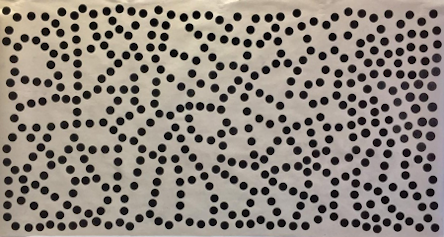
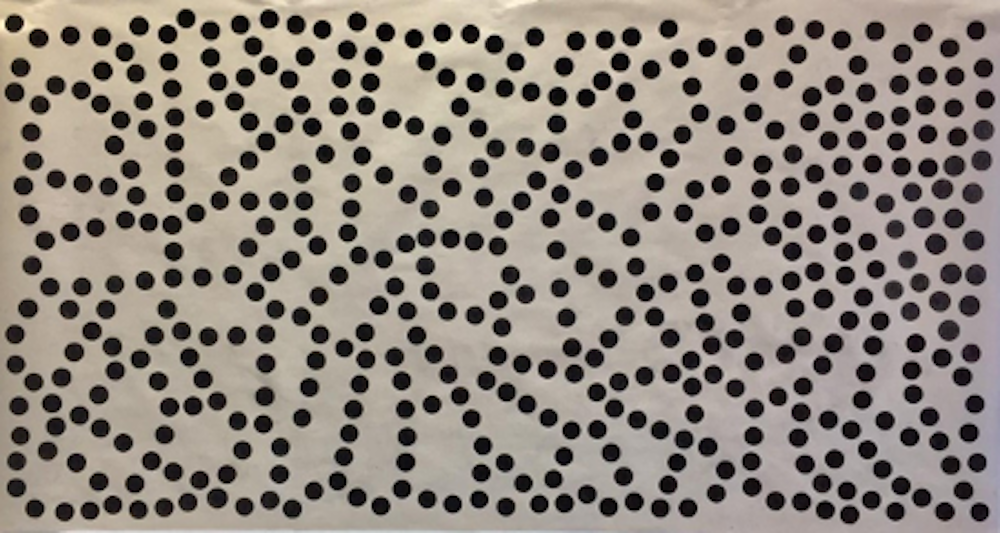
GENERAL CHARACTERISTICS OF JORGE JULÍAN ARISTIZÁBAL'S WORK The work of Jorge Julián Aristizábal is difficult to classify due to its deliberate technical and stylistic diversity. The artist himself has afirmed that “he avoids cultivating a style or a de nite form of expression at any cost,” since, for him, reproducing a style, whatever that might be, would mean cheating life itself, which is in a constant change. It would mean “cutting the roots and creating the death” of his own work and way of thinking. Perhaps the only constant in his work is his insistence on drawing, which has had a dominant role in the Colombian art world of the past decade. He is an artist who is always attentive to language games: those that violently inscribe the dominant ideologies on the body, as well as those that seek to escape this violence. Aristizábal represents these spoken-word games; the titles and inscriptions that proliferate in his graphic work strongly evoke the oral culture of the cities in which he has lived. CHARACTERISTICS OF ARTBO PROJECT 2021: Colombia (reflections on sociopolitical situation) This series of drawings arises spontaneously while the artist is witnessing the deepening of the social, political and economic crisis in his country. Previously in his series Escándalos, also with drawings, he devoted himself to illustrating precisely the facts that have marked the history of corruption and violence that characterizes Colombia, that precedent was definitive to develop these images loaded with criticism, irony and sarcasm. In the artist's words: “I go to drawing to simplify and fully understand concepts, situations and complexities of the world that surrounds me and that arouse all my curiosity. Drawing helps me to speak and digest the situations that disturb me, they function as a deep exorcization of what happens in my universe ”. They are reflections that distort visual codes to enunciate the rottenness of a context.
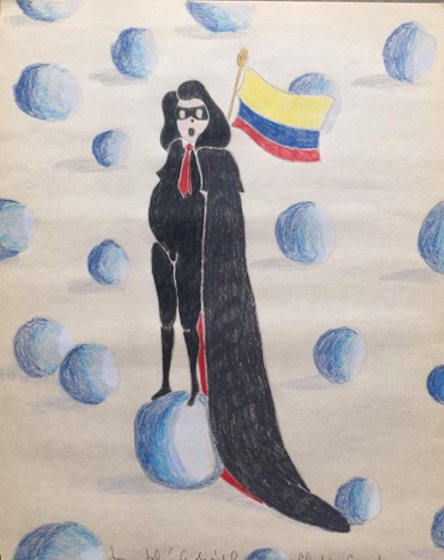
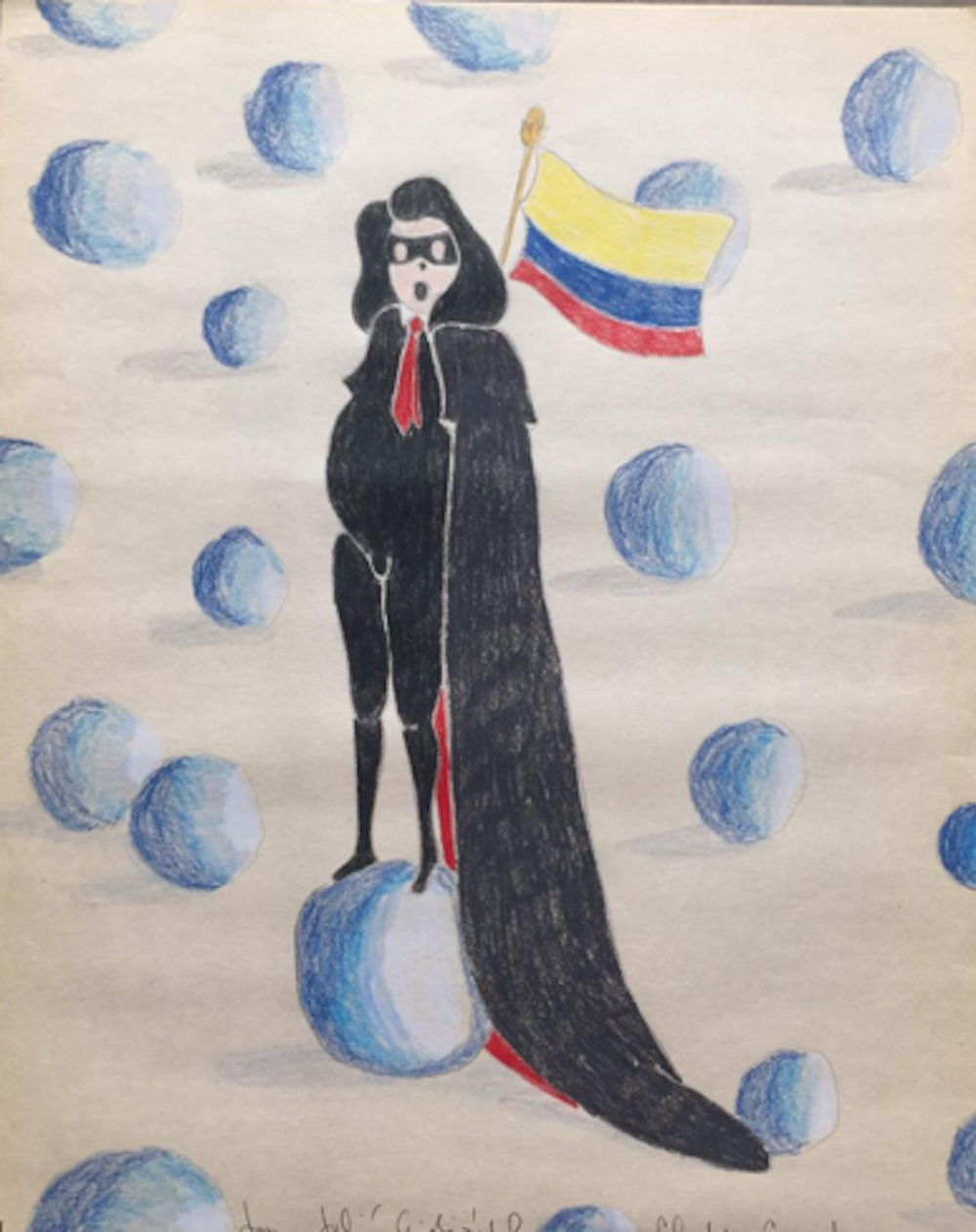
GENERAL CHARACTERISTICS OF JORGE JULÍAN ARISTIZÁBAL'S WORK The work of Jorge Julián Aristizábal is difficult to classify due to its deliberate technical and stylistic diversity. The artist himself has afirmed that “he avoids cultivating a style or a de nite form of expression at any cost,” since, for him, reproducing a style, whatever that might be, would mean cheating life itself, which is in a constant change. It would mean “cutting the roots and creating the death” of his own work and way of thinking. Perhaps the only constant in his work is his insistence on drawing, which has had a dominant role in the Colombian art world of the past decade. He is an artist who is always attentive to language games: those that violently inscribe the dominant ideologies on the body, as well as those that seek to escape this violence. Aristizábal represents these spoken-word games; the titles and inscriptions that proliferate in his graphic work strongly evoke the oral culture of the cities in which he has lived. CHARACTERISTICS OF ARTBO PROJECT 2021: Colombia (reflections on sociopolitical situation) This series of drawings arises spontaneously while the artist is witnessing the deepening of the social, political and economic crisis in his country. Previously in his series Escándalos, also with drawings, he devoted himself to illustrating precisely the facts that have marked the history of corruption and violence that characterizes Colombia, that precedent was definitive to develop these images loaded with criticism, irony and sarcasm. In the artist's words: “I go to drawing to simplify and fully understand concepts, situations and complexities of the world that surrounds me and that arouse all my curiosity. Drawing helps me to speak and digest the situations that disturb me, they function as a deep exorcization of what happens in my universe ”. They are reflections that distort visual codes to enunciate the rottenness of a context.


GENERAL CHARACTERISTICS OF JORGE JULÍAN ARISTIZÁBAL'S WORK The work of Jorge Julián Aristizábal is difficult to classify due to its deliberate technical and stylistic diversity. The artist himself has afirmed that “he avoids cultivating a style or a de nite form of expression at any cost,” since, for him, reproducing a style, whatever that might be, would mean cheating life itself, which is in a constant change. It would mean “cutting the roots and creating the death” of his own work and way of thinking. Perhaps the only constant in his work is his insistence on drawing, which has had a dominant role in the Colombian art world of the past decade. He is an artist who is always attentive to language games: those that violently inscribe the dominant ideologies on the body, as well as those that seek to escape this violence. Aristizábal represents these spoken-word games; the titles and inscriptions that proliferate in his graphic work strongly evoke the oral culture of the cities in which he has lived. CHARACTERISTICS OF ARTBO PROJECT 2021: Colombia (reflections on sociopolitical situation) This series of drawings arises spontaneously while the artist is witnessing the deepening of the social, political and economic crisis in his country. Previously in his series Escándalos, also with drawings, he devoted himself to illustrating precisely the facts that have marked the history of corruption and violence that characterizes Colombia, that precedent was definitive to develop these images loaded with criticism, irony and sarcasm. In the artist's words: “I go to drawing to simplify and fully understand concepts, situations and complexities of the world that surrounds me and that arouse all my curiosity. Drawing helps me to speak and digest the situations that disturb me, they function as a deep exorcization of what happens in my universe ”. They are reflections that distort visual codes to enunciate the rottenness of a context.
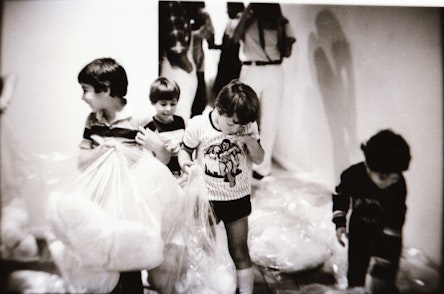
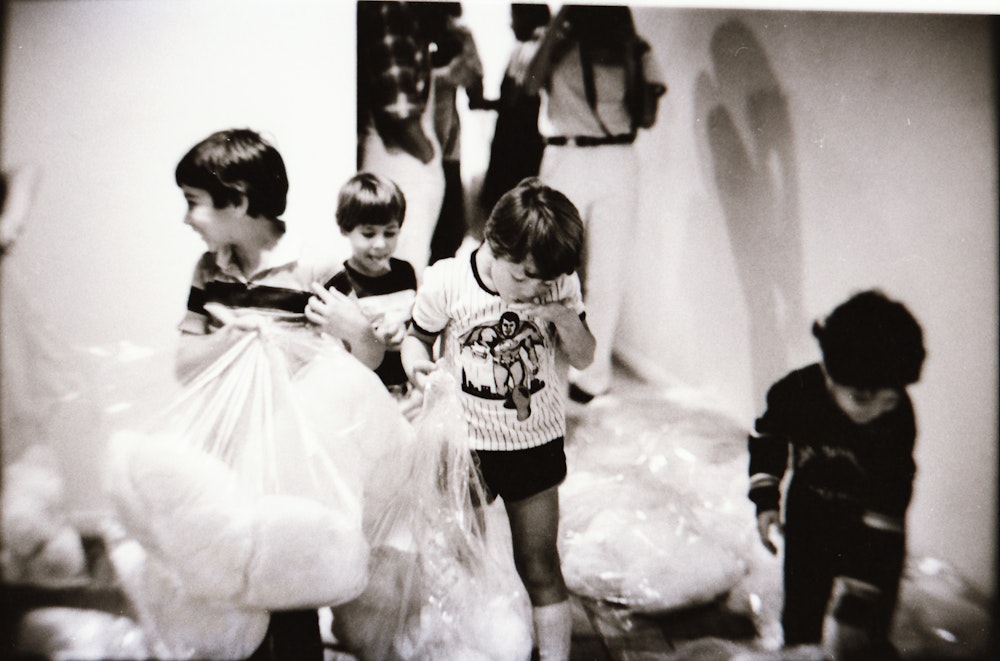
GENERAL CHARACTERISTICS OF MARIA TERESA CANO'S WORK The trajectory of María Teresa Cano (Medellín, 1960) represents one of the Colombian cases with which the artistic changes that occurred in the last two decades of the 20th century can be made visible. Changes not only in formal terms but also those theorists that emerged precisely from thought processes with unconventional materials and in the implementation of a critical practice that put institutions, actors in the environment and the public itself in an uncomfortable place. Cano was aware from a very young age that his being as an artist went beyond the production of works of art and from that position he challenged exhibition spaces and traditional languages. His contributions were definitive for the consolidation of media such as installation or participatory actions, in addition to configuring a discursive framework - nothing literal - about the relationships between art and life. María Teresa Cano was one of the Colombian artists who was part of the iconic exhibition Radical Women: Latin American Art, 1960-1985 curated by the renowned Andrea Giunta and Cecilia Fajardo-Hill. CHARACTERISTICS OF ARTBO PROJECT 2021: Un sueño para niños This was one of the participatory actions with which María Teresa Cano challenged the traditional exhibition formats at the emblematic La Oficina Gallery (Medellin). The artist invaded the gallery room with bags of pink cotton candy and summoned the public at 4:00 p.m., the usual time when a piñata or children's party is called. The exhibition space commonly visited by adults attracted the presence of children. The action- installation consolidated an atmosphere in which the color pink predominated and in which the artist configured a metaphor about consumption. The floor simulated a cloud due to the accumulation of the bags that contained the cotton candy. These types of ephemeral experiments have been vital in Cano's career because it has been from these that he has managed to destabilize the ways in which art operates, circulates and is consumed. The photographic records constitute the archive of these actions, they become the materialization of the work, they restore its non-permanent character.
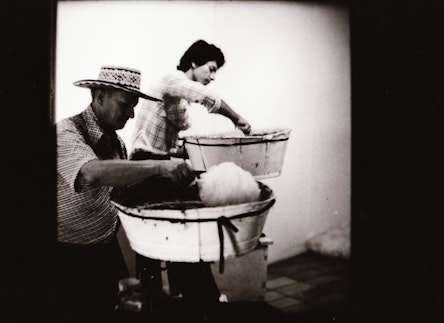
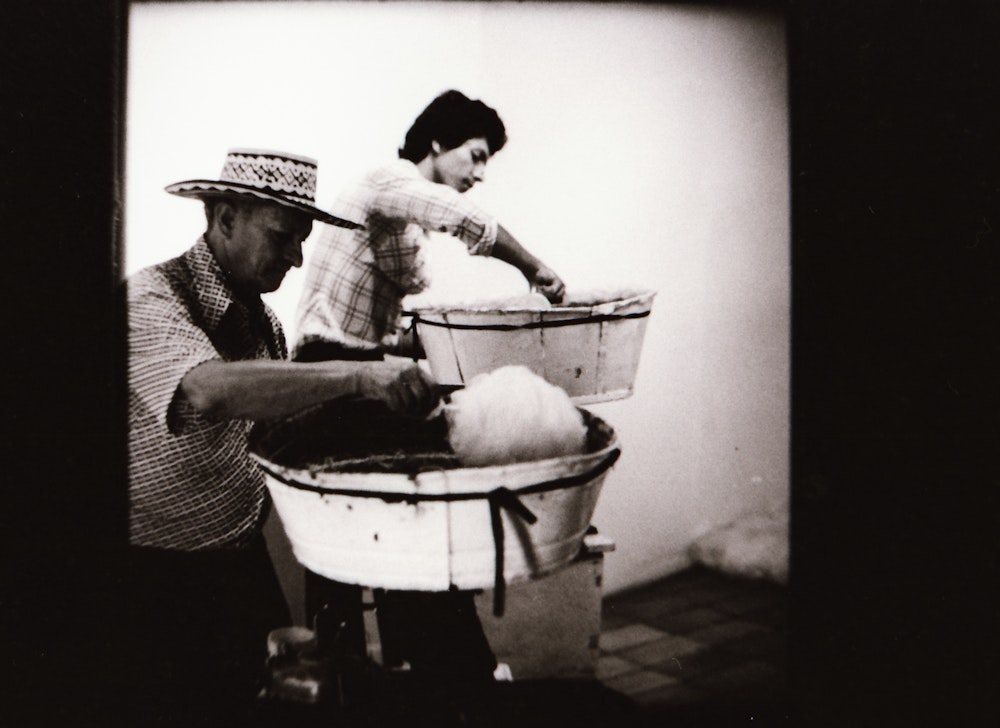
GENERAL CHARACTERISTICS OF MARIA TERESA CANO'S WORK The trajectory of María Teresa Cano (Medellín, 1960) represents one of the Colombian cases with which the artistic changes that occurred in the last two decades of the 20th century can be made visible. Changes not only in formal terms but also those theorists that emerged precisely from thought processes with unconventional materials and in the implementation of a critical practice that put institutions, actors in the environment and the public itself in an uncomfortable place. Cano was aware from a very young age that his being as an artist went beyond the production of works of art and from that position he challenged exhibition spaces and traditional languages. His contributions were definitive for the consolidation of media such as installation or participatory actions, in addition to configuring a discursive framework - nothing literal - about the relationships between art and life. María Teresa Cano was one of the Colombian artists who was part of the iconic exhibition Radical Women: Latin American Art, 1960-1985 curated by the renowned Andrea Giunta and Cecilia Fajardo-Hill. CHARACTERISTICS OF ARTBO PROJECT 2021: Un sueño para niños This was one of the participatory actions with which María Teresa Cano challenged the traditional exhibition formats at the emblematic La Oficina Gallery (Medellin). The artist invaded the gallery room with bags of pink cotton candy and summoned the public at 4:00 p.m., the usual time when a piñata or children's party is called. The exhibition space commonly visited by adults attracted the presence of children. The action- installation consolidated an atmosphere in which the color pink predominated and in which the artist configured a metaphor about consumption. The floor simulated a cloud due to the accumulation of the bags that contained the cotton candy. These types of ephemeral experiments have been vital in Cano's career because it has been from these that he has managed to destabilize the ways in which art operates, circulates and is consumed. The photographic records constitute the archive of these actions, they become the materialization of the work, they restore its non-permanent character.
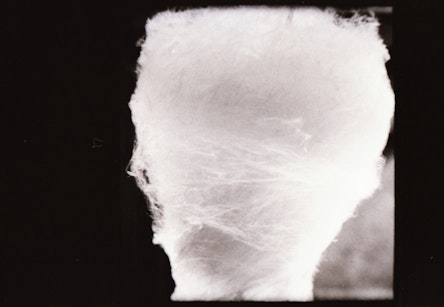
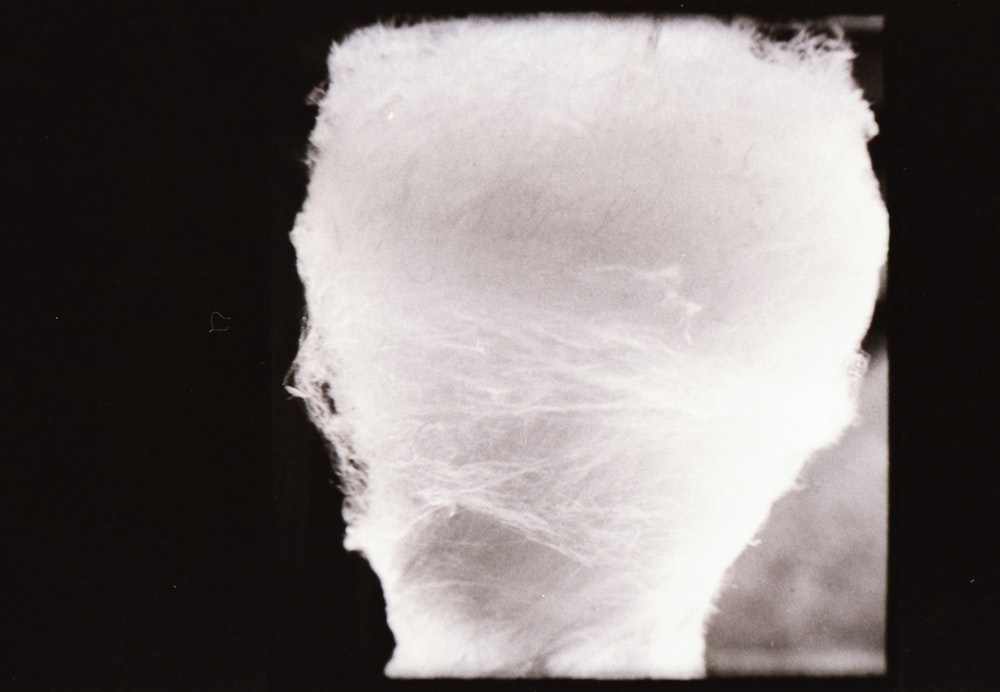
GENERAL CHARACTERISTICS OF MARIA TERESA CANO'S WORK The trajectory of María Teresa Cano (Medellín, 1960) represents one of the Colombian cases with which the artistic changes that occurred in the last two decades of the 20th century can be made visible. Changes not only in formal terms but also those theorists that emerged precisely from thought processes with unconventional materials and in the implementation of a critical practice that put institutions, actors in the environment and the public itself in an uncomfortable place. Cano was aware from a very young age that his being as an artist went beyond the production of works of art and from that position he challenged exhibition spaces and traditional languages. His contributions were definitive for the consolidation of media such as installation or participatory actions, in addition to configuring a discursive framework - nothing literal - about the relationships between art and life. María Teresa Cano was one of the Colombian artists who was part of the iconic exhibition Radical Women: Latin American Art, 1960-1985 curated by the renowned Andrea Giunta and Cecilia Fajardo-Hill. CHARACTERISTICS OF ARTBO PROJECT 2021: Un sueño para niños This was one of the participatory actions with which María Teresa Cano challenged the traditional exhibition formats at the emblematic La Oficina Gallery (Medellin). The artist invaded the gallery room with bags of pink cotton candy and summoned the public at 4:00 p.m., the usual time when a piñata or children's party is called. The exhibition space commonly visited by adults attracted the presence of children. The action- installation consolidated an atmosphere in which the color pink predominated and in which the artist configured a metaphor about consumption. The floor simulated a cloud due to the accumulation of the bags that contained the cotton candy. These types of ephemeral experiments have been vital in Cano's career because it has been from these that he has managed to destabilize the ways in which art operates, circulates and is consumed. The photographic records constitute the archive of these actions, they become the materialization of the work, they restore its non-permanent character.


GENERAL CHARACTERISTICS OF JUAN DAVID HENAO'S WORK In the interest of reflecting on the Latin American identity, symbols created from crosses and transformations given by aesthetic relationships that have been established from the influence of the European colony appear. This view starts from the crafts and their objects with the intention of presenting the aesthetics of a hybrid culture and making a critique of the evolution of an imposed culture. Thus, through the defunctionalization of objects and the re-signification of materials, sculptures are formed that present semantic collisions between two cultures that will never find peace. CHARACTERISTICS OF ARTBO PROJECT 2021: Yacimiento This artistic work takes place in the current archaeological activities of the ´Valle de Aburrá´ driven by the growing buildings that are rapidly articulated to the landscape, but it is precisely the importance that is given to the territory - which in this case is a designated space to inhabit , reside and build - from the awareness of the historical and cultural memory that is nested in the earth as a material in transit and as a container of temporalities. Based on references given in archaeological sites, the intention of this body of ceramic pieces lies in the encounter and recreation of forms and codes expressed in the dimensions of the excavations and the geometric relationships between the point, the circle and the square as axes. Which refer to both the measurements and the form that is in fact present in the processes of findings and ceramic objects from the pre-Columbian era in the Marrón Inciso period (old and late Pueblo phase). In Yacimiento (2020) therefore he makes a reinterpretation of the totality of what is the relationship that we have had and that today we have in transformation with the earth and the territory, the object and the space.
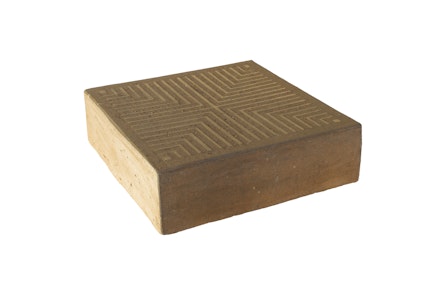
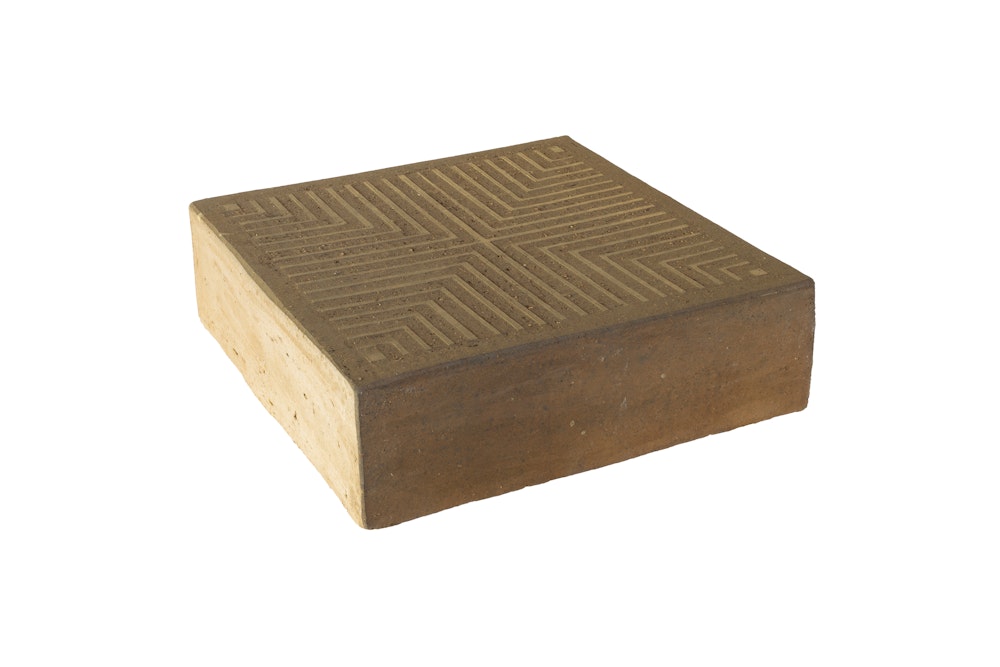
GENERAL CHARACTERISTICS OF JUAN DAVID HENAO'S WORK In the interest of reflecting on the Latin American identity, symbols created from crosses and transformations given by aesthetic relationships that have been established from the influence of the European colony appear. This view starts from the crafts and their objects with the intention of presenting the aesthetics of a hybrid culture and making a critique of the evolution of an imposed culture. Thus, through the defunctionalization of objects and the re-signification of materials, sculptures are formed that present semantic collisions between two cultures that will never find peace. CHARACTERISTICS OF ARTBO PROJECT 2021: Yacimiento This artistic work takes place in the current archaeological activities of the ´Valle de Aburrá´ driven by the growing buildings that are rapidly articulated to the landscape, but it is precisely the importance that is given to the territory - which in this case is a designated space to inhabit , reside and build - from the awareness of the historical and cultural memory that is nested in the earth as a material in transit and as a container of temporalities. Based on references given in archaeological sites, the intention of this body of ceramic pieces lies in the encounter and recreation of forms and codes expressed in the dimensions of the excavations and the geometric relationships between the point, the circle and the square as axes. Which refer to both the measurements and the form that is in fact present in the processes of findings and ceramic objects from the pre-Columbian era in the Marrón Inciso period (old and late Pueblo phase). In Yacimiento (2020) therefore he makes a reinterpretation of the totality of what is the relationship that we have had and that today we have in transformation with the earth and the territory, the object and the space.
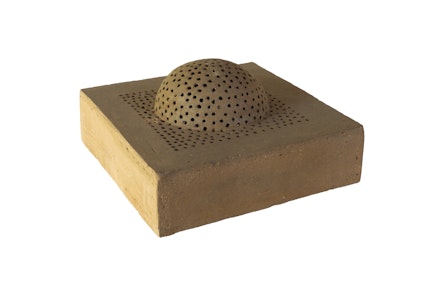

GENERAL CHARACTERISTICS OF JUAN DAVID HENAO'S WORK In the interest of reflecting on the Latin American identity, symbols created from crosses and transformations given by aesthetic relationships that have been established from the influence of the European colony appear. This view starts from the crafts and their objects with the intention of presenting the aesthetics of a hybrid culture and making a critique of the evolution of an imposed culture. Thus, through the defunctionalization of objects and the re-signification of materials, sculptures are formed that present semantic collisions between two cultures that will never find peace. CHARACTERISTICS OF ARTBO PROJECT 2021: Yacimiento This artistic work takes place in the current archaeological activities of the ´Valle de Aburrá´ driven by the growing buildings that are rapidly articulated to the landscape, but it is precisely the importance that is given to the territory - which in this case is a designated space to inhabit , reside and build - from the awareness of the historical and cultural memory that is nested in the earth as a material in transit and as a container of temporalities. Based on references given in archaeological sites, the intention of this body of ceramic pieces lies in the encounter and recreation of forms and codes expressed in the dimensions of the excavations and the geometric relationships between the point, the circle and the square as axes. Which refer to both the measurements and the form that is in fact present in the processes of findings and ceramic objects from the pre-Columbian era in the Marrón Inciso period (old and late Pueblo phase). In Yacimiento (2020) therefore he makes a reinterpretation of the totality of what is the relationship that we have had and that today we have in transformation with the earth and the territory, the object and the space.


GENERAL CHARACTERISTICS OF ASTRID GONZÁLEZ'S WORK I review documents from "universal history" to study symbolic elements that graphically land Afro-descendants in the colonial context, in structural racism, in the birth and consolidation of Maroon and Palenquero peoples, and finally, in whitening processes as the paradigm of progress in the Americas. With photography, digital drawing, video and sculpture as plastic languages, I manifest aesthetic reflections and criticisms on the body of the Afro-descendant who has been represented from the 16th century to the present. Bodies as fields in which they fight the meanings and discourses of racism, invisibility, cultural hybridization and political battles in ethnic recognition as a strategy of ancestral pride. CHARACTERISTICS OF ARTBO PROJECT 2021: Pronounce parsley (perejil) in the slaughter In October 1937 in the Dominican Republic, General Rafael Leonidas Trujillo (creator of what is known as “el trujillato”: a period of 31 years of dictatorship) gave the order to his army to assassinate any black body present in the territories of the border that with difficulty pronouncing the word "parsley". It had already begun that year to strengthen the wire structure and the concrete blocks that divided its Dominican territory with the Haitian neighbor. However, it was until that month that his actions would be felt harshly in the river that divides Creole from Spanish, "African" from "European" and "barbarian" from "civilized." A total of 5000 people were killed by the rifles, machetes and knives of the Dominican armed force in the name of development and against the "Haitianization" of their "hygienic" nation heir to reason and the Spanish civilizing order. While the dictator exercises nationalist speeches, on the banks of the border, from north to south, from river to river, the uniformed men use the radar of racism to identify “possible foreigners” by replacing the birth registration with the phonetic sense.
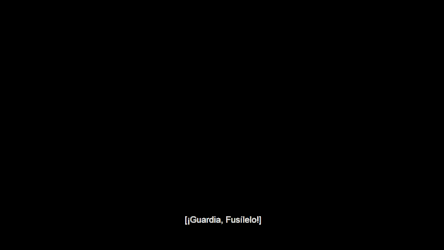
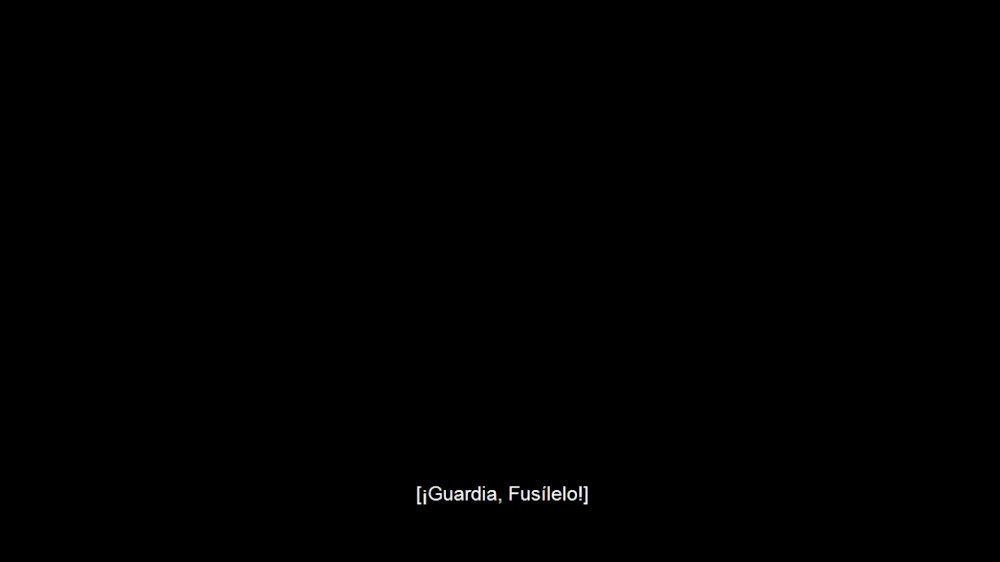
GENERAL CHARACTERISTICS OF ASTRID GONZÁLEZ'S WORK I review documents from "universal history" to study symbolic elements that graphically land Afro-descendants in the colonial context, in structural racism, in the birth and consolidation of Maroon and Palenquero peoples, and finally, in whitening processes as the paradigm of progress in the Americas. With photography, digital drawing, video and sculpture as plastic languages, I manifest aesthetic reflections and criticisms on the body of the Afro-descendant who has been represented from the 16th century to the present. Bodies as fields in which they fight the meanings and discourses of racism, invisibility, cultural hybridization and political battles in ethnic recognition as a strategy of ancestral pride. CHARACTERISTICS OF ARTBO PROJECT 2021: Pronounce parsley (perejil) in the slaughter In October 1937 in the Dominican Republic, General Rafael Leonidas Trujillo (creator of what is known as “el trujillato”: a period of 31 years of dictatorship) gave the order to his army to assassinate any black body present in the territories of the border that with difficulty pronouncing the word "parsley". It had already begun that year to strengthen the wire structure and the concrete blocks that divided its Dominican territory with the Haitian neighbor. However, it was until that month that his actions would be felt harshly in the river that divides Creole from Spanish, "African" from "European" and "barbarian" from "civilized." A total of 5000 people were killed by the rifles, machetes and knives of the Dominican armed force in the name of development and against the "Haitianization" of their "hygienic" nation heir to reason and the Spanish civilizing order. While the dictator exercises nationalist speeches, on the banks of the border, from north to south, from river to river, the uniformed men use the radar of racism to identify “possible foreigners” by replacing the birth registration with the phonetic sense.


GENERAL CHARACTERISTICS OF ASTRID GONZÁLEZ'S WORK I review documents from "universal history" to study symbolic elements that graphically land Afro-descendants in the colonial context, in structural racism, in the birth and consolidation of Maroon and Palenquero peoples, and finally, in whitening processes as the paradigm of progress in the Americas. With photography, digital drawing, video and sculpture as plastic languages, I manifest aesthetic reflections and criticisms on the body of the Afro-descendant who has been represented from the 16th century to the present. Bodies as fields in which they fight the meanings and discourses of racism, invisibility, cultural hybridization and political battles in ethnic recognition as a strategy of ancestral pride. CHARACTERISTICS OF ARTBO PROJECT 2021: Pronounce parsley (perejil) in the slaughter In October 1937 in the Dominican Republic, General Rafael Leonidas Trujillo (creator of what is known as “el trujillato”: a period of 31 years of dictatorship) gave the order to his army to assassinate any black body present in the territories of the border that with difficulty pronouncing the word "parsley". It had already begun that year to strengthen the wire structure and the concrete blocks that divided its Dominican territory with the Haitian neighbor. However, it was until that month that his actions would be felt harshly in the river that divides Creole from Spanish, "African" from "European" and "barbarian" from "civilized." A total of 5000 people were killed by the rifles, machetes and knives of the Dominican armed force in the name of development and against the "Haitianization" of their "hygienic" nation heir to reason and the Spanish civilizing order. While the dictator exercises nationalist speeches, on the banks of the border, from north to south, from river to river, the uniformed men use the radar of racism to identify “possible foreigners” by replacing the birth registration with the phonetic sense.